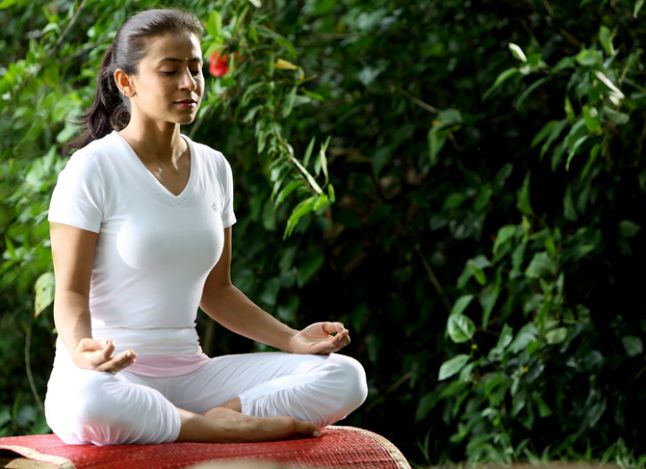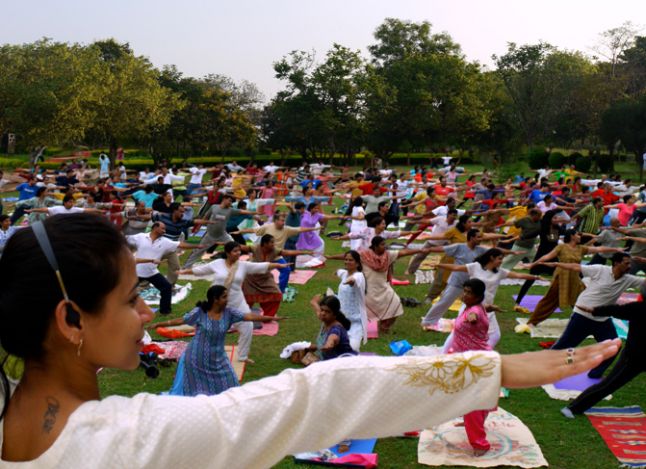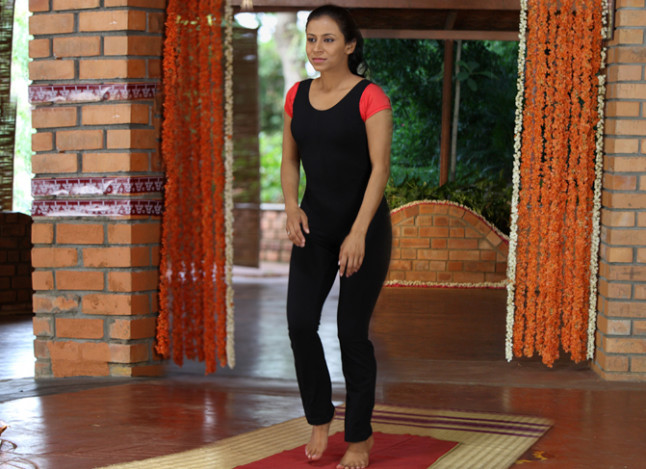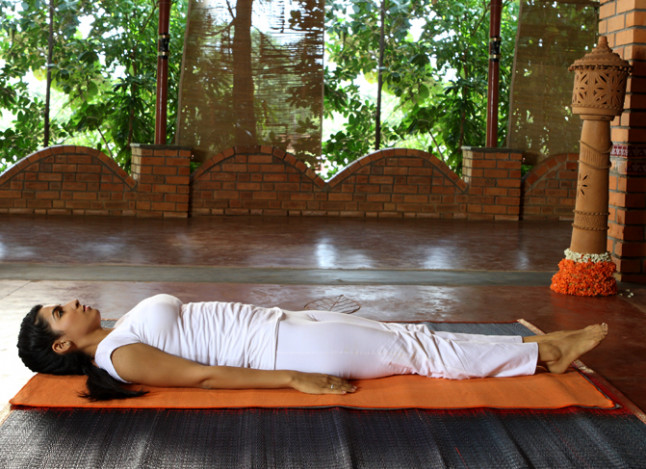
Contents
- 1 Take a Deep Breath Out
- 2 Follow the tradition
- 3 Your doctor and yoga teacher is just a call away
- 4 Simple wearing, high thinking
- 5 Wake up at cuckoo’s call
- 6 Lighter stomach aids to your yoga practice
- 7 Set the tone right before you start
- 8 Smile to take you through the miles
- 9 Slow and steady yoga postures wins the race
- 10 Every yoga posture is unique, like you
- 11 Energy transformed!
Take a Deep Breath Out
Often we equate yoga with some tough, limb-twisting poses. And aren’t you sometimes concerned that: “I can’t even touch my toes, how can I do yoga?” Our Art Of Living Yoga experts have this to say: Yoga is not about touching your toes, or stretching 98 degrees to your north-east. Its a simple process of uniting with yourself – using your breath, body and the mind. And its easy and effortless.

Follow the tradition
It is best to start learning the yoga practice under the guidance of a qualified yoga teacher who can lead you through the correct way of doing each technique. This would help you learn yoga postures properly and avoid possible injuries. Some of the philosophies or techniques taught in yoga may be new. It is a good idea to keep an open mind as it will help broaden and enhance your yoga experience.
Your doctor and yoga teacher is just a call away
If you have a medical condition, inform your yoga instructor prior to the commencement of the training. It will help the teacher customize your yoga posture practice.
Simple wearing, high thinking
Wear comfortable clothing while going for the yoga class or when practicing yoga at home. Also, avoid wearing belts or excessive jewelry as it could get in the way of yoga practice.
Wake up at cuckoo’s call
Although it is best to practice yoga postures early morning, if it doesn’t happen, don’t let it be an excuse to not practice yoga at all! You can do it any time of the day as per convenience.
Lighter stomach aids to your yoga practice
It is advised to practice on an empty stomach or at least 2-3 hours after your last meal. However it’s advised to at least have three to four litres of water during the day as it will help you to flush out the toxins out of the body which are released duing your yoga practice.

Set the tone right before you start
Sukshma Vyayam or gentle warm-up exercises help loosen up the body and prepare it for the yoga postures coming ahead. You can learn a simple and effective warm-up sequence at the Art Of Living Yoga program.

Smile to take you through the miles
See the difference for yourself. Keeping a gentle smile relaxes the body and mind and helps enjoy the yoga postures much more.
Slow and steady yoga postures wins the race
The ancient yogic text, Patanjali Yoga Sutra, defines yoga posture (asana) as SthiraSukhamAsanam. Do only as much as you comfortably can and then just stretch a bit more (to improve body flexibility). Use the breath as a reference point, when it is light and long, then the muscles begin to relax, but when it is jagged or uneven, it means you have over-exerted. Going slightly beyond your comfort zone will keep the yoga practice interesting and will add a spark of challenge as you progress and adopt new postures.
Every yoga posture is unique, like you
Wherever you are in the yogic posture, that is fine for you. Avoid comparing yourself to other students in the yoga class. Remember that each body type is unique and different people are at different levels of expertise. Some might easily perform a particular asana, while the others may need a little more time and practice to get there.

Energy transformed!
As you complete yoga posture practice, don’t be in a great hurry to get up and start moving about with the tasks lined up for the day. It is a good idea to lie down in Yoga Nidra for a few minutes, as it helps cool down the body and consolidate the energy produced through yoga posture practice. Yoga Nidra is also beneficial in completely relaxing the mind and body after the yoga workout.
[“source-Artofliving”]
